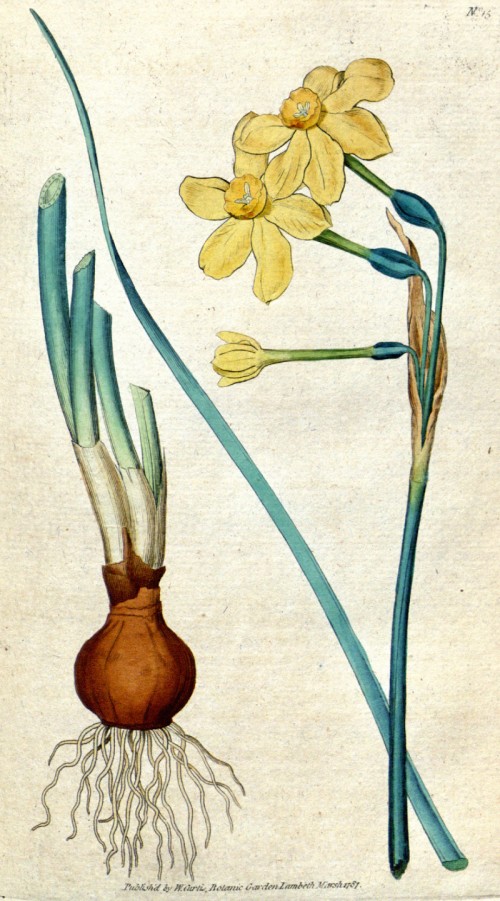Narcissus jonquilla L. - Amaryllidaceae - jonquil, Jonquille
Perennial bulbous herb, up to 35cm high, native to Spain and Portugal, naturalized in Europe, cultivated as ornamental; flowers scented, yellow, in heads of 2-6.
„N.jonquilla has been cultivated since the 18th century in France as the strongest of the Narcissus species used in Narcissus Oil, a component of many modern perfumes.“ http://en.wikipedia.org/wiki/Narcissus_jonquilla
Narcissus × odorus L. = N. jonquilla × N. pseudonarcissus - campernelle jonquil
(Narcissus trevithian = Narcissus × odorus L. variety): „Although nearly half of the essential oil of N. geranium consists of unidentified components, the table clearly demonstrates the principal differences between the two Narcissus varieties: N. trevithian contains more phenolic compounds and fewer esters compared to N. geranium; there is also a remarkable amount of nitrogen/sulfur compounds present in N. geranium, which is mainly caused by indole and derivatives. Such compounds are known to be very important for floral odors. The high amount of alcohols and long-chain acids in N. trevithian probably has more influence on the (long) lastingness of its odor, rather than on the odor quality. The differences in chemical composition are clearly reflected in the odor profiles of both oils: N. trevithian oil was judged as being very strong, very phenolic, narcissus-like, and green and with woody aspects. The odor of N. geranium oil, on the other hand, is also very strong but only slightly phenolic in character.
… there is only a very limited number of components which are common to most Narcissus varieties: some higher n-alkanes, some cresols, benzyl acetate, methyl benzoate and benzyl benzoate, some terpenoids such as limonene, p-cymene, ocimene, linalool, terpinen-4-ol, 1,8-cineole, and α-terpineol, benzyl alcohol and phenethanol, 1-nonanal, and indole. All of these are well-known essential oil compounds, but none is characteristic for narcissus oil.“
[Narcissus trevithian and Narcissus geranium: Analysis and synthesis of compounds.,van Dort, H. M., Jagers, P. P., ter Heide, R., van der Weerdt, A.J., Journal of agricultural and food chemistry, Vol.41(11), 1993, 2063-2075]
Main components of the scent of N.jonquilla (dynamic headspace analysis using Porapaq Q) were methyl benzoate (37.2-55.5%), (E)-β-ocimene (24.6-26.6%), linalool (10.2-19.8%), and 3-methyl-2-butenyl benzoate (1.6-3.9%). Minor volatiles found were e.g. 3-methyl-3-butenyl benzoate (0.6-1.2%), methyl 3-methyl-2-butenoate (1.1-1.2%), and indole (0.1-0.4%).
[Interspecific variation in floral fragrances within the genus Narcissus (Amaryllidaceae)., Dobson, H.E., Arroyo, J., Bergström, G., Groth, I., Biochemical Systematics and Ecology, 25(8), 1997, 685-706]

Botanical Magazine, vol.1, t.15 (1787) [n.a.]
http://plantgenera.org/species.php?id_species=691246

Narcissus jonquilla L. Real Jardín Botánico, Madrid (2010)
CC BY-SA 3.0, Author: Cillas Wikimedia Commons